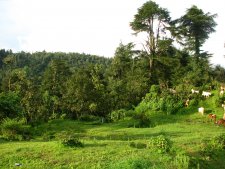By Ritwick Dutta (Posted: October 9, 2008)
In a rare instance, the District Court of Raigarh on 17-9-2008, in the Central Indian State of Chhattisgarh, stayed the proposed Public Hearing for seven projects which included thermal power plants and steel plant expansion projects on the ground of non compliance with the procedure stipulated under the Environment Impact Assessment Notification.
Local resident and activist Ramesh Agrawal of local civil society group: Jan Chetna had objected to the manner in which public hearings are being conducted by Chhattisgarh Environment Conservation Board (CECB). A complaint was filed before the Chief Judicial Magistrate’s Court Raigarh to halt the seven public hearings on the following grounds:
• CECB failed to hold public hearings within stipulated time of 45 days from receipt of request from project proponent and hence not empowered to hold public hearings. • The public were not provided information with respect to the proposed project, this restricts active and effective participation in the decision making process. • Raigarh District is facing sever pollution caused by industries and it is of utmost importance to know people’s concern for upcoming projects since it will affect their Right to Life guaranteed under Article 21 of the Constitution.
Judge A.Toppo expressed his strong concern by citing Supreme Court’s verdict and held that ‘Permission to Establish of industries must only be granted only after assurance that proposed industry will make every effort for conservation of environment. Development is must in this era and equally important is conservation of environment for existence of human life and other living beings. We should maintain balance between Development and Conservation of Environment.’ Court stayed three public hearings.
The District Courts used to be major avenues for redressal of grievances for the public prior to the advent of Public Interest Litigation which is centered in the High Court and the Supreme Court under Article 226 and Article 32 of the Constitution respectively. Today despite the increase in number of civil society groups and increasing recourse to judicial remedy, District Courts are rarely relied on by environmental activists. The liberal relaxation of locus standi and the activists approach of the judges in the mid 80’s and 90’s prompted aggrieved citizens and groups to approach the Supreme Court and High Courts directly circumventing the District Courts. This led to several landmark decision of the higher Courts which are cited by judicial bodies throughout the world. However, over the past few years, the higher courts have increasingly adopted the approach of ‘judicial restraint’ and non interference in the ‘economic and policy’ affairs of the State. Unfortunately, many of the environmental issues get clubbed under this broad category leading and this has led to increased frustration among those who relied on higher Courts to seek relief and fight state policies. The initiative of Jan Chetna is therefore landmark, they chose to approach the judicial forum which is closest to the affected people i.e District Court and got relief. At a time when justice from the Higher Courts eludes struggle groups, the District Courts decision is commendable and also worth replicating in other parts of the country.
Ritwick (ritwickdutta@gmail.com) is an environmental lawyer with Legal Initiative for Forest and Environment (LIFE) and heads the TAI Himalayan Coalition.




